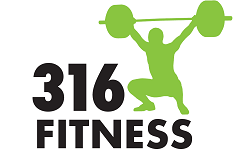A Proven and Simple Approach to Losing Body Fat
I know many of you have body composition and fat loss goals. Coming to the gym and working hard is a step in the right direction but there’s a lot of stuff going on outside of the gym we have to address as well. About once a year I’ll go through a 4-6 week period where I’ll attempt to cut my body fat by a few percentage points just to make sure I can still do it. Essentially I’m a nerd and this is an experiment for me. But it does serve to reinforce the the idea that the same principles work to cut 5-10 lbs now that worked for me several years ago when I needed to drop 40 lbs.
Keep in mind there are many theories and arguments about the optimal way to improve your diet in order to lose fat and improve your health. I’m not going to enter that debate by saying this is the best/only way – I’m merely pointing out what works for me and many others I’ve seen over the years. So where do we start? It really doesn’t have to be that complicated BUT we do need to do a little math so let’s get that out of the way:
Calories – I start at 11x my goal weight. Don’t be unrealistic; use a short-term goal that seems achievable within 10-12 weeks. For me, I started at 192 and the goal was 182 so 182*11=2002 calories.
Protein – I always try and get 1g of protein per lb of bodyweight so that was 192g of Protein which was ~38% of my total caloric intake
Carbs – When trying to drop weight I like to keep these below 20% of my overall caloric intake so that’s going to be 2002*.2=400 calories => 100g of carbs. It probably goes without saying that you should try and get these from solid food choices and not a snack bag of chili cheese fritos.
Fat – This simply makes up the rest of the caloric intake so 42% of 2002 cals = 840 cals => 93g fat.
So a macronutrient breakdown of 40% Protein/ 40% Fat/ 20% Carbs. Your numbers may vary some but probably not much. Now comes the hard part for most people – deciding what and how much to eat and doing that consistently. I suppose you could take the neurotic approach which would have you weighing your food every day and every meal for the next few months. Good luck with that. What I do is simply use a calorie counting app/website like FitDay and layout what one or two days worth of meals looks like. Once you’ve done this exercise, and you’ve gone through the trouble of measuring your food for a couple days, you will have a good idea of what a typical meal should look like for you. You’ll know how much meat your can eat in a meal, or how many potatoes/rice to dish up, how many pieces of fruit you can eat, etc. See this is the key – you need to understand what your typical daily intake looks like. This way when you’re scrambling for something to eat you understand that going to Chipotle and getting rice, beans and corn is probably going to overshoot your carb budget; but rice only probably won’t.
Here is the typical daily intake I had during this process
Breakfast – 3 eggs, 4oz ham, 1 banana
Post Workout Meal – 4oz chicken breast, 1/2 Avocado, 1 small salad, 1/2c mashed sweet potato
Meal 3 – 4oz deli meat, 1 oz cheese, 1/4c hummus, 4oz baby carrots
Meal 4 – 6oz steak, 1/2c Pistachios, 1c green beans
Bed – 1 protein shake
That was a typical day and it isn’t terribly complicated. Almost anything in there can be substituted out for similar items so you’re not stuck eating the same thing every day. Some days I didn’t get Meal 3 in or I only ate a portion of it. I can’t say that I ever felt terribly hungry except for maybe the first couple days. I should also mention that one day a week I didn’t watch what I ate at all. I would eat tacos and/or have a few beers and I’ve never found this to affect progress too much. Now crushing the golden corral buffet for 7500 calories might be a bit over the top so keep it within reason.
After 1 month I had dropped 3% body fat and 9lbs of body weight. Anyone can do this but it requires touch choices and a little bit of planning. When you’re tempted to hit up Pie Five you have to go home and eat chicken instead. If you’re not willing to do that, that’s ok, but don’t expect progress on the body composition goals. When people tell me they “eat pretty clean” I’ve found they often have selective memory. They eat clean about 50% of the time and the other 50% is not so good. You really need to up that adherence to 90% clean if you want to see progress. Like most things in life a little science and basic math can go a long ways. If you couple this with some will power I have no doubt you can reach your goals…
